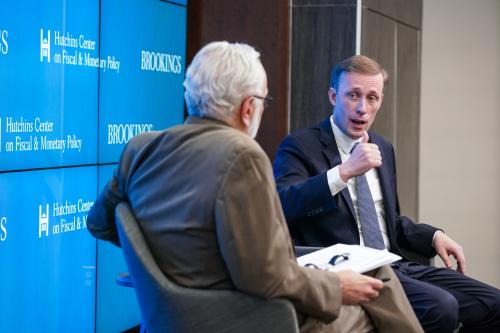Like most changes, the surging value of the dollar is creating both winners and losers. It is a blessing for American consumers and those of us who would like a spring vacation in Europe. On the other hand, it will be a bane in the lives of Americans looking for a future job in manufacturing because it causes the price of American exports to go up, and imports to become cheaper. It is a reflection of the strength of the U.S. economic recovery as investors pursue opportunities in an expanding economy, but maybe even more so the weakness of the economies of the Eurozone and Japan.
In a global economy, it is important to focus on broad trade-weighted measures of the exchange rate that reflect the relative importance of our trade with other countries. Thus, the halving of the value of the ruble against the U.S. dollar is actually of little economic consequence to the United States because our economic exchanges with Russia are minimal. But the Euro and the Yen represent major U.S. trading partners. Adjusted for inflation differences, the trade-weighted dollar has risen by 30 % from its low in 2011—about the same as its rise in the IT-fueled boom of 1995 to 2002, but is remains far below the prior peaks of 1985 and 2002. The United States and China stand out as the two countries with the largest appreciation, and Japan has witnessed the largest depreciation–also about 30 percent over the past three years–as the Abe government seeks the means to rejuvenate Japan’s economy. The euro has fallen nearly 20 percent against the dollar over the past year, but its trade-weighted decline is actually half that or less than 10 percent, as other trading partners have followed its value down.
Exchange rates are largely determined by basic forces of supply and demand, but their changing values are frustratingly hard to predict, and large fortunes have been won and lost in bets in their future values. To the extent that foreign exchange is desired for the purpose of purchasing the goods and services of other countries, exchange rates will reflect the relative strength of countries’ business activity and differences in rates of price inflation, basic determinants of the demand for exports and imports. But, with the growing openness of international capital markets, exchange rates have become more reflective of perceived differences in investment opportunities and they are often dominated by developments in financial markets. That change is particularly true in recent years as innovations in monetary policy, such as various versions of quantitative easing, reflect a commitment to an accommodative monetary policy stance extending far into the future, which can have strong effects on exchange rates. Expectations of a sustained regime of low interest rates lead to reduced demand for assets denominated in the domestic currency, and as a result, exchange rate depreciation. With the shift away from quantitative easing in the United States, and its expansion in Japan and the Eurozone, the price of the dollar can be expected to rise even further in relative terms.
To date, these large realignments of currency values among the major economies have had surprisingly small effects on trade flows. Substantial increases in the real value of the dollar in the early 1980s and 2000s were both associated with the emergence of large trade deficits, and the subsequent declines moved the trade balance back toward zero. We came to associate a 10 percent rise in the real exchange rate with a fall in in the trade balance of 1-1½ percent of GDP.
The lack of change in the U.S. trade balance might be attributed to a lagging response to what has been a fairly recent turnaround — the dollar had been declining in value prior to 2012. And , the U.S. trade deficit will be held down in the short-run by the abrupt drop in the price of imported oil.
The failure of Japan to generate a larger improvement in its trade is more puzzling. More than two years have passed since so-called “Abenomics” initiated a sharp yen depreciation, yet the trade balance shows little evidence of change. Economic developments within the Eurozone are also disappointing. The EU needs a realignment of competition among its members – an effective devaluation in the South and relative price appreciation in the North. Yet, with a common exchange rate, improved competitiveness with the rest of the world brings only ever-growing surpluses for Germany, while the peripheral countries continue to struggle.
Ongoing exchange realignments and shifting trade balances could become more divisive in future months now that the European Central Bank has joined the Bank of Japan in a large program of monetary expansion. As lagged effects of the exchange rate changes work through the trading system, the negative effects on U.S. growth will become pronounced and competitive tensions over exchange rate policies will rise.



Commentary
Op-edThe strong dollar: Winners and losers
February 12, 2015